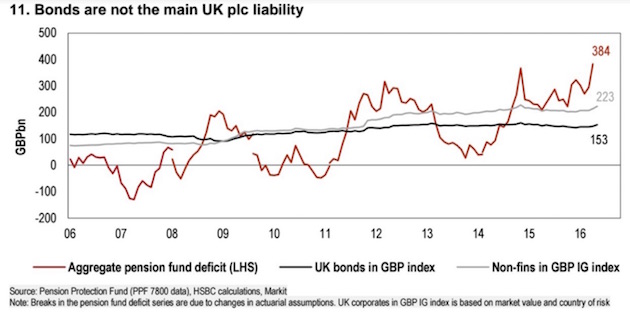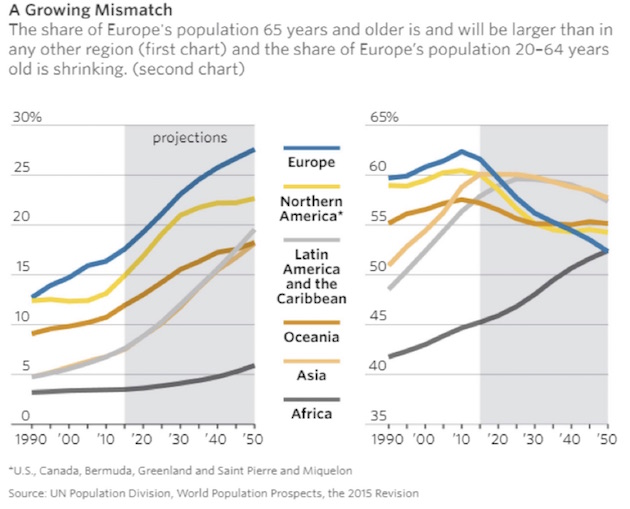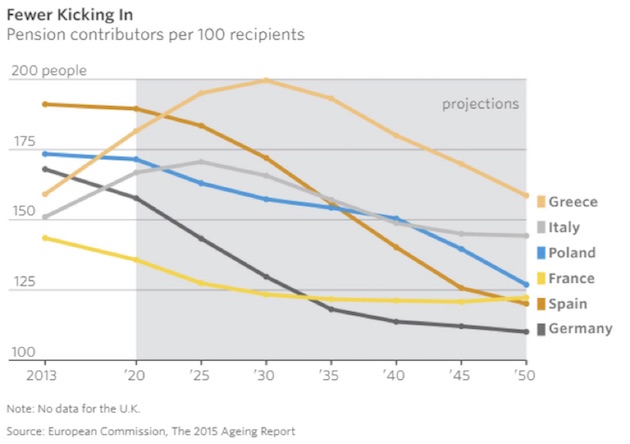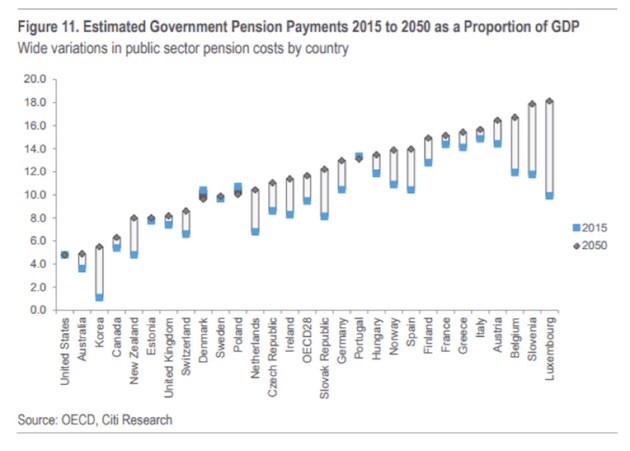




If Trump were not a quitter he would be totally justified in placing his feet on the desk, go out and play golf for the next three plus years.
There are a lot who wish he would.
But Trump is not a quitter. In fact, I believe there is a part of him that relishes the opportunity to fight, to have adversaries and to engage.
The jury remains out as to whether he will accomplish much or any of his agenda because he is dealing with a recalcitrant, egocentric party, Democrats who have no desire to engage, for fear of allowing him to claim a victory, a mass media that will do whatever they can to portray him in the worst light and, of course, he willingly makes his own contribution to the various frays in which he constantly seems engaged.
Trump would like to correct some of the past legislative failures and/or mistakes of his predecessors and in many subtle ways is actually making progress but they are not perceived and/or felt at this point. Most useless, costly and restrictive legislation is being undone. The potential for reviving the economy and getting GDP growth above anemic levels is within grasp. Particularly would this be the case had Republicans passed health care reform and rid the nation of regressive income tax policies.
Time will tell.
The NFL nonsense will fade but every effort to replace it with something else, I have not doubt, will be undertaken by those who hate Trump because their mission is to make disruption a priority.(See 1 and 1a below.)
My biggest concern is that Trump seems unwilling, along with politicians from both parties, to tackle the matter of unfunded obligations and our growing obligatory benefit deficits. I do not know whether unfunded pensions will cause inflation to resurrect itself or whether deflation, which has been a pressing problem, will accelerate. I do believe a fiscal train wreck remains in our future if we continue to spend believing we can borrow our way out of the mess we are creating and ignoring.
Light bulbs often brighten before burning out and it would be tragic if America allowed itself to literally become the home of "The Whopper."
No one can predict the timing of the inevitable but if we remain divided it will make any meaningful effort at meeting the next crisis more difficult. (See 2 below - worth a repeat.)
Stay Tuned.
++++++++++++++++++++++++++++
I will be in and out for the next week or so and this could well be my last memo for a while.
+++++++++++++++
Dick
++++++++++++++++++++++++++++++++++++++++++++++
1)
What is Behind the Refusal to Stand for the Anthem?
The debate about whether football players should stand for the national anthem moved to the center of the national conversation last month. On Sunday, September 24, scores of National Football League players, knelt, sat or stayed in the locker room while the Star-Spangled Banner was played. What used to be a rote exercise that began all sports events suddenly became seen as an indicator of sympathy for the Black Lives Matter movement or antipathy for President Donald J. Trump.
The most telling moment in the controversy, however, may have come a day later, when one NFL player felt compelled to apologize. The contrarian was not one of those allegedly protesting the nation's perceived shortcomings. It was, instead, a player who stood at attention and with his hand over his heart while the anthem was played.
Alejandro Villanueva was in the spotlight because he chose to stand and salute in sight of the fans -- and the television cameras -- at the entrance to the field while the rest of his Pittsburgh Steelers teammates stayed in their locker room. Within 24 hours, his number 78 Steelers jersey became the league's best-selling merchandise. Villanueva was apparently quickly shamed by his team into expressing regret.
In the aftermath of his public browbeating, it did not take much deep analysis for many Americans to see that the factor that separated Villanueva from his teammates was his military service.
A graduate of West Point and a veteran of three tours of service as an Army Ranger in Afghanistan, Villanueva is an outlier not only in terms of the NFL, but also as far as most Americans are concerned.
According to the Pentagon's Defense Manpower Center, active service members make up only 0.4 percent of the population of the United States. Even more telling is that more than 44 years after the Selective Service effectively ended conscription, the percentage of veterans has plummeted. In 2015, it was reported that only 7.3% of Americans had served in the military at some point during their lives. With each passing year, as the last veterans of World War Two and Korea pass away and with even the youngest Vietnam-era service members entering their seventies, this percentage will decline. Most Americans know nothing of what the military's sacrifice entails and are apparently prone not to value what those who serve in the military are defending. Ironically, surveys show the military to be the most respected of contemporary American institutions.
At the same time, opinion surveys continue to show a decline in expressions of patriotism, such as pride in the values of America or in being American. That number reached a historic low in April of 2017 when Gallup reported that only 52% of respondents said they were "extremely proud" to be Americans.
Gallup's numbers showed Democrats and millennials polled on the question of how they felt about America were less likely to express pride in their country than Republicans or older Americans. As college students have been increasingly shielded from knowing positive values that America has brought to civilization, the resulting impact on the culture cannot be considered a surprise.
Of course, to some of those who refuse to stand for the anthem, kneeling is a public reproach to racism that still exists in the US as well as in many other societies, as well as a supposed expression of patriotism in accord with the American tradition of free speech, honoring dissent.
One does not have to be a veteran to love one's country or to embrace its symbols. Dissent, even in forms that are offensive to many, can also be declared expressions of democracy.
Moreover, Trump's demand that NFL owners players be fired -- they are not his to fire -- doubtless caused many players to join the protesters as a way of demonstrating their antipathy for an unpopular president rather than resentment toward police forces accused of targeting African-Americans for death (often without any basis in statistics or the facts of controversial cases, such as the death of Michael Brown in Ferguson, Missouri).
The teaching of what used to be called civics or history has declined to the point where Americans know very little about their roots or how a republican form of government works. At the same time, public education in the post-Vietnam era, as well as textbooks often developed with the "help" of dubious sources (here, here, here and here) have also emphasized America's flaws while undermining the sense that it is a place worth defending.
As the sports world has gone from being a sector of the culture where patriotic gestures were transformed from universally accepted time-honored rituals to the occasion for leftist "virtue signaling," it is worth wondering if the battles over the anthem are more the natural outcome of a popular culture that no longer teaches Western values or requires either a draft or any kind of national service.
1a) Michael Jordan: ‘I can no longer stay silent’ — The Undefeated
July 25, 2016
“To support that effort, I am making contributions of $1 million each to two organizations, the International Association of Chiefs of Police’s newly established Institute for Community-Police Relations and the NAACP Legal Defense Fund. The Institute for Community-Police Relations’ policy and oversight work is focused on building trust and promoting best practices in community policing. My donation to the NAACP Legal Defense Fund, the nation’s oldest civil rights law organization, will support its ongoing work in support of reforms that will build trust and respect between communities and law enforcement. Although I know these contributions alone are not enough to solve the problem, I hope the resources will help both organizations make a positive difference.
“We are privileged to live in the world’s greatest country – a country that has provided my family and me the greatest of opportunities. The problems we face didn’t happen overnight and they won’t be solved tomorrow, but if we all work together, we can foster greater understanding, positive change and create a more peaceful world for ourselves, our children, our families and our communities.”
++++++++++++++++++++++++++++++++++++
2) Global Retirement Reality
By John Mauldin
|
Today we’ll continue to size up the bull market in governmental promises. As we do so, keep an old trader’s slogan in mind: “That which cannot go on forever, won’t.” Or we could say it differently: An unsustainable trend must eventually stop.

Lately I have focused on the trend in US public pension funds, many of which are woefully underfunded and will never be able to pay workers the promised benefits, at least without dumping a huge and unwelcome bill on taxpayers. And since taxpayers are generally voters, it’s not at all clear they will pay that bill.
Readers outside the US might have felt smug and safe reading those stories. There go those Americans again, spending wildly beyond their means. You are correct that, generally speaking, we are not exactly the thriftiest people on Earth. However, if you live outside the US, your country may be more like ours than you think. Today we’ll look at some data that will show you what I mean. This week the spotlight will be on Europe.
First, let me suggest that you read my last letter, “Build Your Economic Storm Shelter Now,” if you missed it. It has some important background for today’s discussiion, as well as a special invitation to attend my Strategic Investment Conference next March 6–9 in San Diego. With so much change occurring so quickly now, next year’s conference is an event you shouldn’t miss.
I wrote a letter last June titled “Can You Afford to Reach 100?” Your answer may well be “Yes;” but, if so, you are one of the few. The World Economic Forum study I cited in that letter looked at six developed countries (the US, UK, Netherlands, Japan, Australia, and Canada) and two emerging markets (China and India) and found that by 2050 these countries will face a total savings shortfall of $400 trillion. That’s how much more is needed to ensure that future retirees will receive 70% of their working income. This staggering figure doesn’t even include most of Europe.

This problem exists in large part because of the projected enormous increase in median life expectancies. Reaching age 100 is already less remarkable than it used to be. That trend will continue. Better yet, I think we will also be healthier at advanced ages than people are now. Could 80 be the new 50? We’d better hope so, because the math is pretty bleak if we assume people will stop working at age 65–70 and then live another quarter-century or more.
That said, I think we’ll see a great deal of national variation in these trends. The $400 trillion gap is the shortfall in government, employer, and individual savings. The proportions among the three vary a great deal. Some countries have robust government-provided retirement plans; others depend more on employer and individual contributions. In the aggregate, though, the money just isn’t there. Nor will it magically appear just when it’s needed.
WEF reaches the same conclusion I did long ago: The idea that we’ll enjoy decades of leisure before our final decline simply can’t work. Our attempt to live out long and leisurely retirements is quickly reaching its limits. Most of us will work well past 65 whether we want to or not, and many of us will not have our promised retirement benefits to help us through our final decades.
What about the millions who are already retired or close to retirement? That’s a big problem, particularly for the US public-sector workers I wrote about in my last two letters. We should also note that we’re all public-sector workers in a way, since we must pay into Social Security and can only hope Washington gives us something back someday.
Let’s look at a few other countries that are not much better off.
The WEF study shows that the United Kingdom presently has a $4 trillion retirement savings shortfall, which is projected to rise 4% a year and reach $33 trillion by 2050. This in a country whose total GDP is $3 trillion. That means the shortfall is already bigger than the entire economy, and even if inflation is modest, the situation is going to get worse. Further, these figures are based mostly on calculations made before the UK decided to leave the European Union. Brexit is a major economic realignment that could certainly change the retirement outlook. Whether it would change it for better or worse, we don’t yet know.
A 2015 OECD study (mentioned here) found that across the developed world, workers could, on average, expect governmental programs to replace 63% of their working-age incomes. Not so bad. But in the UK that figure is only 38%, the lowest in all OECD countries. This means UK workers must either build larger personal savings or severely tighten their belts when they retire. Working past retirement age is another choice, but it has broader economic effects – freezing younger workers out of the job market, for instance.
UK employer-based savings plans aren’t on particularly sound footing, either. According to the government’s Pension Protection Fund, some 72.2% of the country’s private-sector defined-benefit plans are in deficit, and the shortfalls total £257.9 billion. Government liabilities for pensions went from being well-funded in 2007 to having a shortfall 10 years later of £384 billion (~$500 billion). Of course, that figure is now out of date because, just a few months later, it’s now £408 billion – that’s how fast these unfunded liabilities are growing. Again, that’s a rather tidy sum for a $3 trillion economy to handle.

UK retirees have had a kind of safety valve: the ability to retire in EU countries with lower living costs. Depending how Brexit negotiations go, that option could disappear.
Turning next to the Green Isle, 80% of the Irish who have pensions don’t think they will have sufficient income in retirement, and 47% don’t even have pensions. I think you would find similar statistics throughout much of Europe.
A report this summer from the International Longevity Centre suggested that younger workers in the UK need to save 18% of their annual earnings in order to have an “adequate” retirement income – which it defines as less than today’s retirees enjoy. But no such thing will happen, so the UK is heading toward a retirement implosion that could be at least as damaging as the US’s.
Americans often have romanticized views of Switzerland. They think it’s the land of fiscal discipline, among other things. To some extent that’s true, but Switzerland has its share of problems, too. The national pension plan there has been running deficits as the population grows older.
Earlier this month, Swiss voters rejected a pension reform plan that would have strengthened the system by raising women’s retirement age from 64 to 65 and raising taxes and required worker contributions. From what I can see, these were fairly minor changes, but the plan still went down in flames as 52.7% of voters said no.
Voters around the globe generally want to have their cake and eat it, too. We demand generous benefits but don’t like the price tags that come with them. The Swiss, despite their fiscally prudent reputation, appear to be not so different from the rest of us. Consider this from the Financial Times:
Alain Berset, interior minister, said the No vote was “not easy to interpret” but was “not so far from a majority” and work would begin soon on revised reform proposals.
Bern had sought to spread the burden of changes to the pension system, said Daniel Kalt, chief economist for UBS in Switzerland. “But it’s difficult to find a compromise to which everyone can say Yes.” The pressure for reform was “not yet high enough,” he argued. “Awareness that something has to be done will now increase.”
That description captures the attitude of the entire developed world. Compromise is always difficult. Both politicians and voters ignore the long-term problems they know are coming and think no further ahead than the next election. The remark that “Awareness that something has to be done will now increase” may be true, but there’s a big gap between awareness and motivation – in Switzerland and everywhere else.
Switzerland and the UK have mandatory retirement pre-funding with private management and modest public safety nets, as do Denmark, the Netherlands, Sweden, Poland, and Hungary. Not that all of these countries don’t have problems, but even with their problems, these European nations are far better off than some others.
(Sidebar: low or negative rates in those countries make it almost impossible for their private pension funds to come anywhere close to meeting their mandates. And many of the funds are by law are required to invest in government bonds, which pay either negligible or negative returns.)
The European nations noted above have nowhere near the crisis potential that the next group does: France, Belgium, Germany, Austria, and Spain are all pay-as-you-go countries (PAYG). That means they have nothing saved in the public coffers for future pension obligations, and the money has to come out of the general budget each year. The crisis for these countries is quite predictable, because the number of retirees is growing even as the number of workers paying into the national coffers is falling. There is a sad shortfall of babies being born in these countries, making the demographic reality even more difficult. Let’s look at some details.
Spain was hit hard in the financial crisis but has bounced back more vigorously than some of its Mediterranean peers did, such as Greece. That’s also true of its national pension plan, which actually had a surplus until recently. Unfortunately, the government chose to “borrow” some of that surplus for other purposes, and it will soon turn into a sizable deficit.
Just as in the US, Spain’s program is called Social Security, but in fact it is neither social nor secure. Both the US and Spanish governments have raided supposedly sacrosanct retirement schemes, and both allow their governments to use those savings for whatever the political winds favor.
The Spanish reserve fund at one time had €66 billion and is now estimated to be completely depleted by the end of this year or early in 2018. The cause? There are 1.1 million more pensioners than there were just 10 years ago. And as the Baby Boom generation retires, there will be even more pensioners and fewer workers to support them. A 25% unemployment rate among younger workers doesn’t help contributions to the system, either.
A similar dynamic may actually work for the US, because we control our own currency and can debase it as necessary to keep the government afloat. Social Security checks will always clear, but they may not buy as much. Spain’s version of Social Security doesn’t have that advantage as long as the country stays tied to the euro. That’s one reason we must recognize the potential for the Eurozone to eventually spin apart. (More on that below.)
On the whole, public pension plans in the pay-as-you-go countries would now replace about 60% of retirees’ salaries. Further, several of these countries let people retire at less than 60 years old. In most countries, fewer than 25% of workers contribute to pension plans. That rate would have to double in the next 30 years to make programs sustainable. Sell that to younger workers.
The Wall Street Journal recently did a rather bleak report on public pension funds in Europe. Quoting:
Europe’s population of pensioners, already the largest in the world, continues to grow. Looking at Europeans 65 or older who aren’t working, there are 42 for every 100 workers, and this will rise to 65 per 100 by 2060, the European Union’s data agency says. By comparison, the U.S. has 24 nonworking people 65 or over per 100 workers, says the Bureau of Labor Statistics, which doesn’t have a projection for 2060. (WSJ)
While the WSJ story focuses on Poland and the difficulties facing retirees there, the graphs and data in the story make clear the increasingly tenuous situation across much of Europe. And unlike most European financial problems, this isn’t a north-south issue. Austria and Slovenia face the most difficult demographic challenges, right along with Greece. Greece, like Poland, has seen a lot of its young people leave for other parts of the world. This next chart compares the share of Europe’s population that 65 years and older to the rest of the regions of the world and then to the share of population of workers between 20 and 64. These are ugly numbers.
 Source: WSJ
The WSJ continues:
Across Europe, the birthrate has fallen 40% since the 1960s to around 1.5 children per woman, according to the United Nations. In that time, life expectancies have risen to roughly 80 from 69.
In Poland birthrates are even lower, and here the demographic disconnect is compounded by emigration. Taking advantage of the EU’s freedom of movement, many Polish youth of working age flock to the West, especially London, in search of higher pay. A paper published by the country’s central bank forecasts that by 2030, a quarter of Polish women and a fifth of Polish men will be 70 or older.
 Source: WSJ
Next week we will look at the unfunded liabilities of the US government. It will not surprise anyone to learn that the situation is ugly, and there is no way – zero chance, zippo – that the US government will be able to fund those liabilities without massive debt and monetization.
Now, what I am telling you is that every bit of analysis about the pay-as-you-go countries in Europe suggests that they are in a far worse position than the United States is. Plus, the economies of those countries are more or less stagnant, and they are already taxing their citizens at close to 50% of GDP.
The chart below shows the percentage of GDP needed to cover government pension payments in 2015 and 2050. But consider that the percentage of tax revenues required will be much higher. For instance, in Belgium the percentage of GDP going to pensions will be 18% in about 30 years, but that’s 40–50% of total tax revenues. That hunk doesn’t leave much for other budgetary items. Greece, Italy, Spain? Not far behind.

And there is other research that makes the above numbers seem optimistic by comparison. The problem that the European economies have is that for the most part they are already massively in debt and have high tax rates. And they can’t print their own currencies.
Many of Europe’s private pension companies and corporations are also in seriously deep kimchee. Low and negative interest rates have devastated the ability of pension funds to grow their assets. Combined with public pension liabilities, the total cost of meeting the income and healthcare needs of retirees is going to increase dramatically all across Europe.
Macron, the new French president, really is trying to shake up the old order, to his credit; and this week he came out and began to lay the foundation for the mutualization of all European debt, which I assume would end up on the balance sheet of the ECB. However, that plan still doesn’t deal with the unfunded liabilities. Do countries just run up more debt? It seems like the plan is to kick the can down the road just a little further, something Europe is becoming really good at.
In this next chart, note the line running through each of the countries, showing their debt as a percentage of GDP. Italy’s is already over 150%. And this is a chart based mostly on 2006 and earlier data. A newer chart would be much uglier.

I could go on reviewing the retirement problems in other countries, but I hope you begin to see the big picture. This crisis isn’t purely a result of faulty politics – though that’s a big contributor – it’s a problem that is far bigger than even the most disciplined, future-focused governments and businesses can easily handle.
Look what we’re trying to do. We think people can spend 35–40 years working and saving, then stop working and go on for another 20–30–40 years at the same comfort level – but with a growing percentage of retirees and a shrinking number of workers paying into the system. I’m sorry, but that’s magical thinking. And it’s not what the original retirement schemes envisioned at all. Their goal was to provide for a relatively small number of elderly people who were unable to work. Life expectancies were such that most workers would not reach that point, or would at least live just a few years beyond retirement.
As I have pointed out in past letters, when Franklin Roosevelt created Social Security for people over 65 years old, US life expectancy was about 56 years. If the retirement age had kept up with the increase in life expectancy, the retirement age in the US would now be 82. Try and sell that to voters.
Worse, generations of politicians have convinced the public that not only is a magical outcome possible, it is guaranteed. Many politicians actually believe it themselves. They aren’t lying so much as just ignoring reality. They’ve made promises they aren’t able to keep and are letting others arrange their lives based on the assumption that the impossible will happen. It won’t.
How do we get out of this jam? We’re all going to make big adjustments. If the longevity breakthroughs I expect happen soon (as in the next 10–15 years), we may be able to adjust with minimal pain. We’ll work longer years, and retirement will be shorter, but it will be better because we’ll be healthier.
That’s the best-case outcome, and I think we have a fair chance of seeing it, but not without a lot of social and political travail. How we get through that process may be the most important question we face.
I haven’t even thrown in the complications that are going to arise because of changes in the nature of employment and the future of work that will be caused by technological change in the next 10–20 years. That will mean even fewer workers for each retiree. Facebook’s Zuckerberg talks about a basic minimum income. I think that is the wrong thing to do. It is the nature of human beings to need to do things that contribute meaningfully to the lives of their family and society. But the reality is that increasing numbers of people are already having trouble finding that sort of work.
Maybe we should think about basic minimum employment. FDR put a generation of people to work building public projects that helped get us through the Great Depression. Our world is going to change in ways that we don’t yet understand and that we are not prepared for, psychologically, socially, politically, or economically.
In the US and much of Europe we have developed social echo chambers in which we talk just to ourselves and those who are like-minded, ignoring or demonizing the other side. We have lost the ability to disagree rationally and productively. When the children’s books written by Dr. Seuss are considered by some to have been written by a white racist and are therefore deemed unacceptable to be in a public library, you know the quality of civil discourse has spiraled downward.
I do not like that, Sam I am.---
John Mauldin
|
+++++++++++++++++++++++++++++++++++++
No comments:
Post a Comment